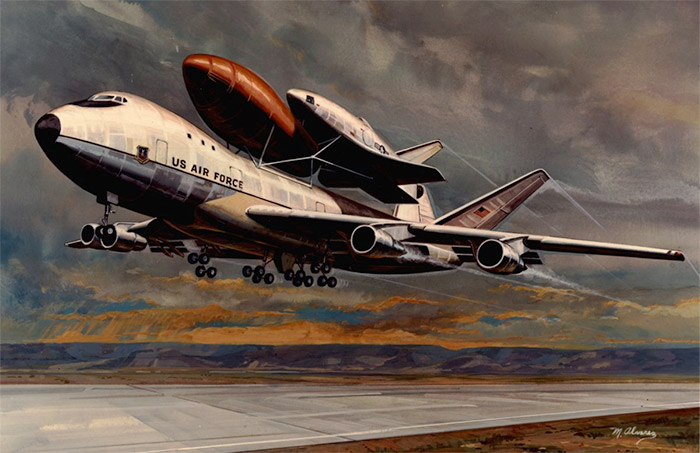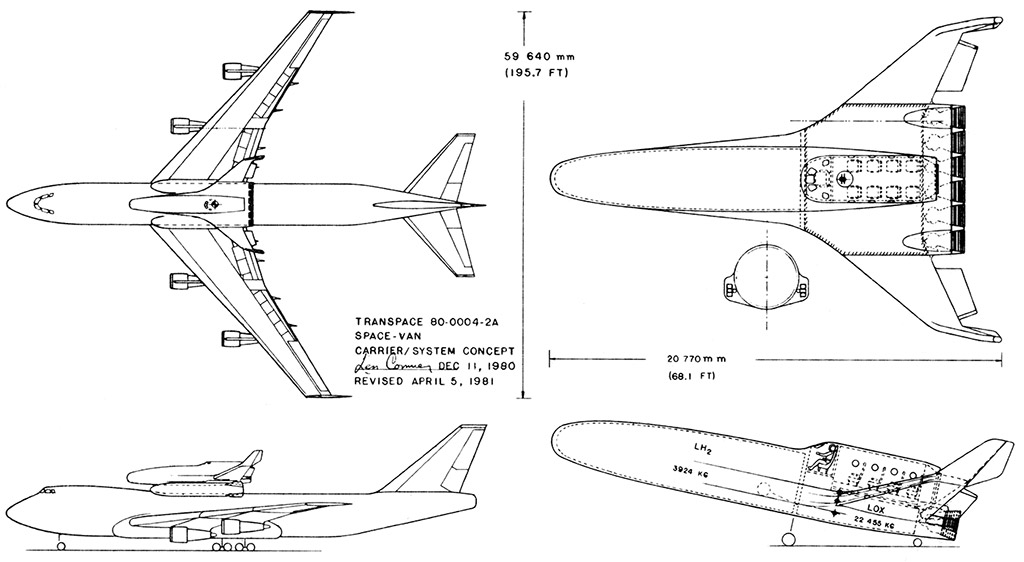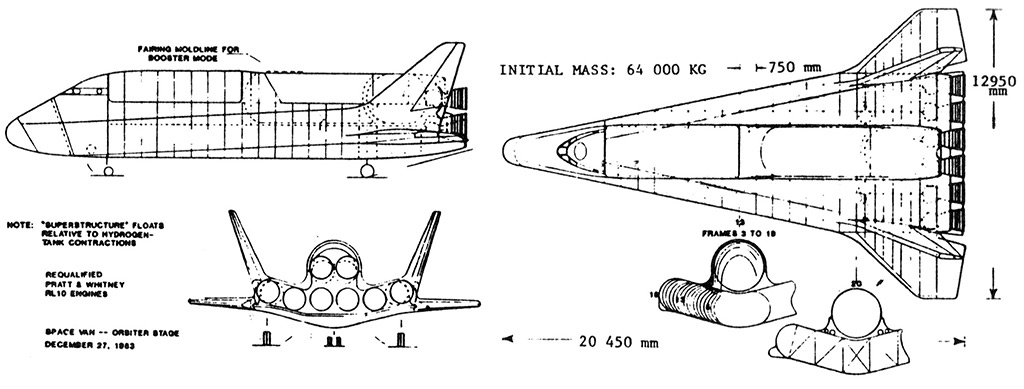Swiss Space Systems (S-3) recently announced its intent to develop a small satellite launcher. The S-3 launcher would comprise an unmanned spaceplane carried on the back of a zero-g-certified Airbus A300. The spaceplane would be launched from the A300 at an altitude of 10 kilometers (32,800 feet) and climb to an altitude of 80 kilometers (49 miles) on rocket power. At that point, it would deploy an upper stage and satellite before gliding back to its spaceport for landing, as shown in the following video.
[youtube=http://www.youtube.com/watch?v=_sLx6VH9EVU&w=700]
Swiss Space Systems, which is working with the French Aerospace firm Dassault and Belgian firms Sonaca and Space Application Services, will leverage work previously done for the European Space Agency’s Hermes spaceplane and NASA’s X-38 lifting body. The system is designed to launch satellites weighing up to 250 kg (550 pounds) at a price of 10 million Swiss Francs (about $10.5 million) per launch. The company hopes to bring the new launch system to operation by 2017 at a cost of 250 million Swiss Francs (about $260 million). It has already signed a contract with the Van Karman Institute for four launches.
Although unconventional, the idea of using a large airliner as a launch platform for a reusable spaceplane is not a new idea. In fact, the idea is more than 30 years old.
In 1978, Len Cormier left left Rockwell International, where he had worked on the Space Shuttle, to form TranSpace, Inc. (later Third Millenium Inc., also known by the Roman numerals MMI). Cormier believed that the Space Shuttle was overdesigned and could never live up to the cost projections which had been promised. With his new company, he began to design a much simpler, lower cost launch vehicle, which he called the Space Van.
Cormier realized that the combination of potential energy, kinetic energy, and reduced drag/gravity losses from air launch would reduce the energy needed to reach orbit by about 670 meters/second. Additionally, launching at airline altitude would eliminate the need for an altitude-compensating engine nozzle. To exploit these advantages, he designed a rocket-powered spacecraft he called the Space Van. (Click on the drawing below for a more detailed view.)
The Space Van was to be powered by six Pratt&Whitney RL-10 rocket engines, which were already in use on the Centaur upper stage and had proven to be extremely reliable. Given the RL-10’s proven reliability, Cormier saw no problems in using them on reusable vehicle. The original Space Van concept carried all of its liquid-hydrogen fuel internally but most of its liquid oxygen was carried in two reusable drop tanks. Together, the orbiter and drop tanks had a combined takeoff weight of 136,700 pounds. The Boeing 747 would carry the vehicle to a launch altitude of 40,000 feet.
Unlike the Space Shuttle, which used its wings only for reentry and landing, the Space Van would fly a lifting trajectory after launch. The use of aerodynamic lift limited the thrust requirements and reduced the number of RL-10 engines required. The twin drop tanks were placed to absorb the support loads on the carrier aircraft and relieve structural bending loads on separation. The Space Van’s planform loading was 60% lower than the Shuttle’s, leading to reentry temperatures 500°F lower, allowing the use of an all-metallic heat shield. Due to low wing loading after burnout, landing approach speed was 35% lower than the Shuttle’s. Additionally, because the Space Van was air-launched rather than taking off from a runway, the landing gear could be optimized for landing at burnout weight rather than gross weight (which was about eight times heavier).
Recognizing that high flight rates were the key to economical operations, Cormier designed the Space Van for small payloads. Each flight would carry a passenger module with 8 people or a cargo module with one ton of payload. Cormier believed the Space Van could be developed for an initial investment of $500 million ($1.2 billion in 2013 dollars). That amount would cover research and development, fabrication of three orbiters and 12 drop tanks, procurement and modification of two 747’s, and the infrastructure needed to support 150 flights per year. Expanding operations to 1500 flights per year would require four or five additional carrier aircraft, 28 additional orbiters, and additional facilities, requiring an additional $750 billion ($1.8 billion in 2013 dollars).
Cormier estimated that each orbiter would fly 50 times per year for 10 years. Based on this flight rate, an allowing for return on investment, he calculated a projected price per flight of $250,000 ($600,000 in 2013 dollars). That translates to a ticket into space for $75,000 person or $300 per pound of cargo (in 2013 dollars).
Cormier foresaw some potential problems with the air-launch concept, particularly in ensuring positive separation from the carrier aircraft. To solve the separation problem, he proposed a pullup/pushover maneuver. The pilot of the carrier aircraft would pull up to a 10-20° flightpath angle, then push over into a zero-lift or low-lift ballistic arc. This would allow the orbiter to separate and clear the tail of the carrier aircraft before igniting the rocket engines.
Cormier joked that the Space Van design “set aviation back 50 years” because of the landing gear. The Space Van was a taildragger, with limited visibility over the nose. That did not bother Cormier, who had flown taildraggers from US Navy carriers during World War II. Len still hoped to fly some of the Space Van test flights himself, if investors would let him.
By 1983, Cormier had revised the Space Van design to use a more modern tricycle landing gear, as shown below. The revised Space Van could accommodate passenger or cargo modules, as before, but it also had the capability to carry a “space stage.” This upper stage, powered by two additional RL-10 engines, would allow the Space Van to launch a larger cargo into orbit. When operating with the space stage, the orbiter itself would fly a suborbital trajectory, returning to the launch site. The space-stage engine module could be recovered by a Space Van orbiter on a later mission. The use of the space stage would increase cargo capacity to about three tons. (Click on the drawing below for a more detailed view of the 1983 concept.)
Unfortunately, Cormier had trouble finding investors. The Space Shuttle was just entering service, and most people in the private sector believed the Shuttle would be the National Space Transportation System as NASA predicted. The full extent of Shuttle cost overruns, and their effect on launch prices, was not yet apparent. So, Cormier turned to his military contacts.
The US Air Force took an interest in Cormier’s Space Van concept, which it renamed the Air Launched Sortie Vehicle. Unfortunately, to Cormier’s dismay and frustration, the Air Force passed over his small consulting firm and decided to give the concept to one of the major aerospace contractors (a pattern that would be repeated frequently with startup companies in future years).
Boeing partnered with Pratt & Whitney (manufacturer of the RL-10 rocket engine) to study an unmanned version of the ALSV. In this concept, the 747 carried liquid hydrogen and liquid oxygen internally, in insulated dewar tanks. A Space Shuttle Main Engine was added to the tail of 747 to provide thrust augmentation for the launch-and-separation maneuver. The propellants would be transferred to the ALSV just prior to launch. Storing the propellants in insulated tanks allowed the system to wait at the edge of the runway on ready alert. The ASLV could overfly any point on Earth, or fly past any object in Low Earth Orbit, within 90 minutes of takeoff.

Air launch promised all-azimuth launch capability, including militarily significant polar orbits, without debris-impact problems. The ALSV could operate from any Air Force base with 10,000-foot runways, maneuver propulsively or aerodynamically, and return to an Air Force Base for landing.
A cluster of ten RL-10 engines was planned for ALSV propulsion.
Boeing was not the only aerospace contractor involved in the studies. Rockwell International, which was the prime contractor for the Space Shuttle orbiter, proposed a piloted ALSV powered by a Space Shuttle Main Engine instead of RL-10’s.
The Rockwell concept is shown below.

Like many Cold War projects, ALSV had its Eastern bloc counterpart. In the 1980’s, the Russian design bureau NPO Moliniya began to develop a concept called the Multipurpose Aerospace System (MAKS, according to the Russian acronym). MAKS was designed to be launched from an Antonov 225 Mriya, the world’s largest aircraft, which was originally developed to carry the Soviet Buran space shuttle orbiter.
Three separate versions of MAKS were proposed. MAKS-OS was the baseline system, with a small reusable orbiter and an expendable propellant tank. Main propulsion would be two RD-701 rocket engines using an advanced dual-fuel propulsion system switching from LOX/kerosene to LOX/hydrogen in flight. The MAKS-OS orbiter had a two-seat crew cabin. In addition to the crew, it was designed to carry a payload up 6.8 meters (22 feet) long and 2.6 meters (8 feet in diameter), weighing up to 8.3 metric tons (18,000 pounds).
MAKS-T was a cargo version, with an expendable upper stage replacing the reusable orbiter. This unmanned system was designed to place 18 metric tons (39,000 pounds) into a 51° orbit, 19.5 metric tons (43,000 pounds) into an equatorial orbit, or 5 tons (11,000 pounds) into geosynchronous orbit. These payload weights rival the 55,000-pound maximum payload launched by the US Space Shuttle.
MAKS-M would have been the most advanced version. With advanced structures, it would eliminate the expendable propellant tank in favor of a fully reusable single-stage orbiter. The projected payload was 5.5 metric tons (12,000 pounds) to a 51° orbit or 7 metric tons (15,000 pounds) to equatorial orbit.
Development work on MAKS continued after the fall of the Soviet Union. In the mid-90’s, Molniya worked with British Aerospace on a design study for a suborbital demonstrator, called RADEM, under a contract from the European Space Agency. In 2010, Molniya talked publicly about reviving the MAKS project. So far, there is no sign of that happening.




Great project, I like the fact that this new company does not reinvent the wheel and builds its model on existing and proven technologies. Simplicity is beautiful.